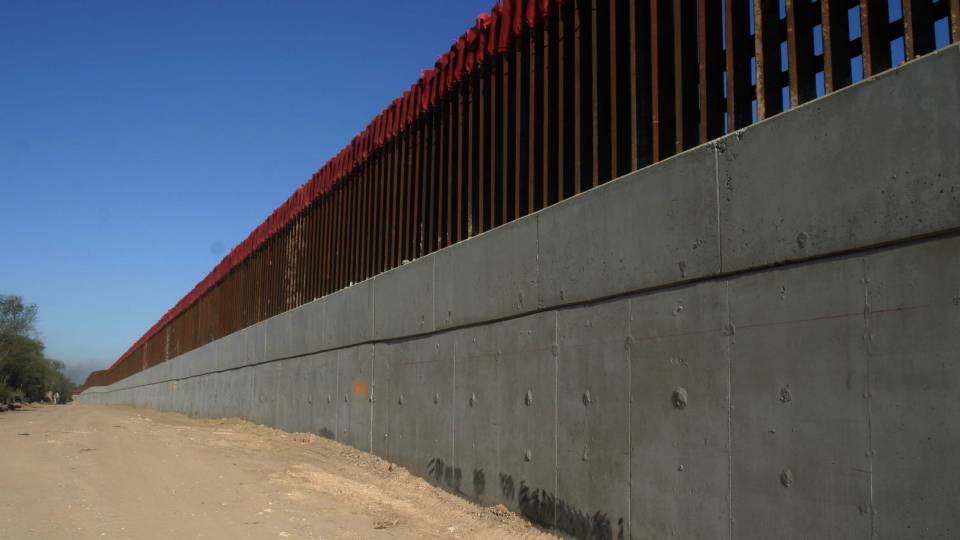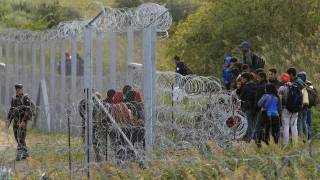The Cost of a Border Wall vs. the Cost of Illegal Immigration
The findings of this analysis show that if a border wall stopped a small fraction of the illegal immigrants who are expected to come in the next decade, the fiscal savings from having fewer illegal immigrants in the country would be sufficient to cover the costs of the wall. This analysis takes the likely education level of illegal border-crossers and applies fiscal estimates developed by the National Academies of Sciences, Engineering, and Medicine (NAS) for immigrants by education level. NAS calculates the future fiscal balance immigrants create — taxes paid minus costs. NAS reports fiscal balances as "net present values", which places a lower value on future expenditures than on current expenditures.
Based on the NAS data, illegal border-crossers create an average fiscal burden of approximately $74,722 during their lifetimes, excluding any costs for their U.S.-born children. If a border wall stopped between 160,000 and 200,000 illegal crossers — 9 to 12 percent of those expected to successfully cross in the next decade — the fiscal savings would equal the $12 to $15 billion cost of the wall.
Among the findings:
- There is agreement among researchers that illegal immigrants overwhelmingly have modest levels of education — most have not completed high school or have only a high school education.
- There is also agreement that immigrants who come to America with modest levels of education create significantly more in costs for government than they pay in taxes.
- A recent NAS study estimated the lifetime fiscal impact (taxes paid minus services used) of immigrants by education. Averaging the cost estimates from that study and combining them with the education levels of illegal border-crossers shows a net fiscal drain of $74,722 per illegal crosser.
- The above figures are only for the original illegal immigrants and do not include any costs for their U.S.-born descendants. If we use the NAS projections that include the descendants, the fiscal drain for border-crossers grows to $94,391 each.
- If a border wall prevented 160,000 to 200,000 illegal crossings (excluding descendants) in the next 10 years it would be enough to pay for the estimated $12 to $15 billion costs of the wall.
- Newly released research by the Institute for Defense Analyses (IDA) done for the Department of Homeland Security indicates that 170,000 illegal immigrants crossed the border successfully without going through a port of entry in 2015. While a significant decline in crossings from a decade ago, it still means that there may be 1.7 million successful crossings in the next decade. If a wall stopped just 9 to 12 percent of these crossings it would pay for itself.
- If a wall stopped half of those expected to successfully enter illegally without going through a port of entry at the southern border over the next 10 years, it would save taxpayers nearly $64 billion — several times the wall's cost.
Important Caveats and Observations About These Estimates
- In addition to crossing the border surreptitiously, aliens join the illegal population primarily by overstaying a temporary visa. A southern border wall would not address this part of the illegal flow.
- A large share of the net fiscal cost of illegal immigrants is at the state and local level, not the federal level. The costs of building the wall will be borne by the federal government.
- To create its long-term fiscal estimates for immigrants by education level, the NAS uses the concept of "net present value" (NPV). This concept, which is commonly used by economists, has the effect of reducing the size of the net fiscal drain that unskilled immigrants will create in the future. The NAS does this because costs or benefits years from now are valued less in economics relative to more immediate costs. But this means the actual net lifetime fiscal cost of illegal border-crossers, given their education levels, is possibly $140,000 to $150,000 each in their lifetimes if the NPV concept is not used.
Methodology
The Importance of Educational Attainment. There is a good deal of agreement among researchers that the education level of immigrants is a key factor in determining their net fiscal impact. As a recent study by the NAS states, the education level of arriving immigrants is one of the "important determinants" of their fiscal impact. This finding is similar to a 1997 study by NAS that also examined the fiscal impact of immigrants.6 This conclusion also is mirrored by a 2013 study from the Heritage Foundation. Referring to the education level of household heads, Heritage concluded that "Well-educated households tend to be net tax contributors." But at the same time, "Poorly educated households, whether immigrant or U.S.-born, receive far more in government benefits than they pay in taxes."7 My own research has come to the same conclusion. The reason for this is straightforward: Those with modest levels of education tend to earn low wages in the modern American economy, and as a result tend to make low tax payments and often qualify for means-tested programs. The less educated are a net fiscal drain, on average, regardless of legal status or if they were born in the United States or a foreign country.
Education Levels of Illegal Immigrants. In terms of the educational attainment of illegal immigrants, there is a good deal of evidence that they have modest levels of education, much lower than native-born Americans or legal immigrants. The Heritage study discussed above estimated that, on average, illegal immigrants have 10 years of schooling. My own analysis for all illegal immigrants (visa overstayers and illegal border-crossers together) is that 54 percent of adults have not completed high school, 25 percent have only a high school degree, and 21 percent have education beyond high school. The Pew Research Center has estimated that of all adult illegal immigrants, 47 percent have not completed high school, 27 percent have only a high school education, 10 percent have some college, and 15 percent have a bachelor's degree or more. These figures are for all illegal immigrants, including those who overstayed a temporary visa, not just illegal border-crossers.
Education Level of Border-Crossers. Since the border wall would by definition only impact the flow of those who cross the border illegally and not those who overstay a temporary visa or are smuggled into the country, it is necessary to estimate the education level of illegal border-crossers separately. Illegal crossers tend to be the least educated component of illegal immigration because they are mostly from Latin America and because more educated foreign nationals wishing to come to the United States can often qualify for a temporary visa, which they can then overstay. For example, a person with few years of schooling, a low paying job, and no property in their home country is not likely to qualify for a tourist visa or other temporary visitor visa. American consulates overseas would typically deny such a person a tourist visa (B2) or business traveler visa (B1) because the assumption is that such persons may be coming to stay permanently. They are "intending immigrants" in the terminology of the consular service. This is especially true for the primary sending countries of illegal immigration, which are all developing countries. A more educated person is much more likely to qualify for a tourist visa, or for that matter a guestworker visa or a student visa, which they can then overstay.
Because illegal border-crossers are overwhelmingly from Mexico and the rest of Latin America, we use the education level of illegal immigrants from Latin America to estimate border-crossers' education profile. My analysis of illegal immigrants from Latin America indicates that they have the following education: 57 percent, less than high school; 27 percent, high school only; 10 percent, some college or associate's degree; 4 percent, bachelor's only; and 2 percent, more than a bachelor's.13 These educational levels provide a baseline for estimating the fiscal impact of illegal crossers. However, as we will see, even if we use somewhat different estimates of education, the fiscal impact of illegal border-crossers is still large and negative.
Fiscal Impact by Education Level. The 2016 NAS study mentioned above projected the lifetime fiscal impact (taxes paid minus services used) of immigrants by education. These estimates are expressed as a net present value. This is a concept used in fiscal studies to express the sum total of costs or benefits over long periods of time — in this case a lifetime. NPV represents the fiscal balance (taxes paid minus costs) if we had to spend the money today. Later in this report we discuss in more detail the concept of net present value, both its usefulness and it shortcomings.
In addition to the original immigrant, the NAS study also has separate estimates for the descendents of immigrants over 75 years. In this analysis we focus only on the fiscal impact of the original immigrant. The tax payments and costs created by the descendants of immigrants over 75 years are speculative, whereas the estimates for the original immigrants are more grounded in current reality. The NAS study does not report separate estimates for illegal and legal immigrants. Rather, they simply estimate tax payments and expenditures on immigrants as they appear in Census Bureau data, primarily the Current Population Survey Annual Social and Economic Supplement. As result, the education estimates from the NAS are for both legal and illegal immigrants.
Read the rest here.






















